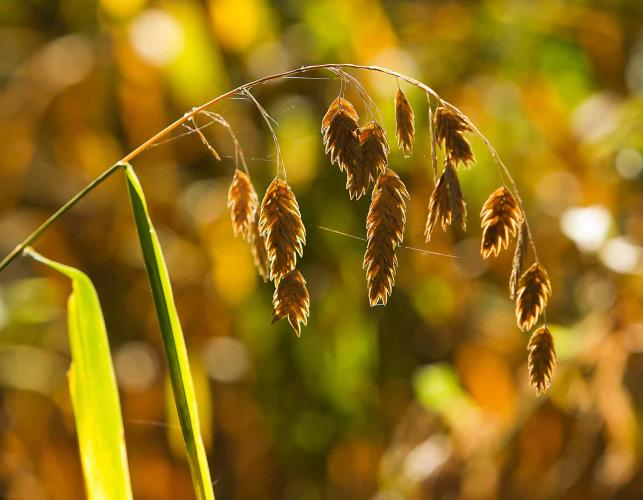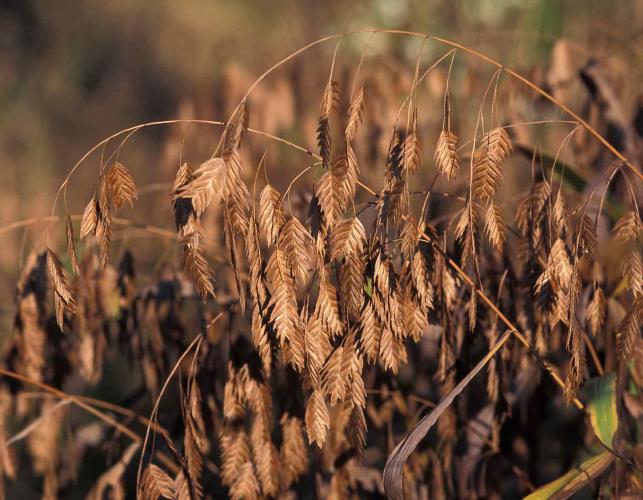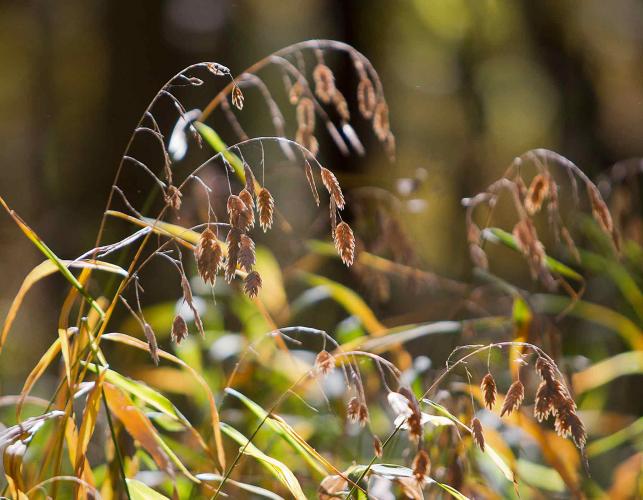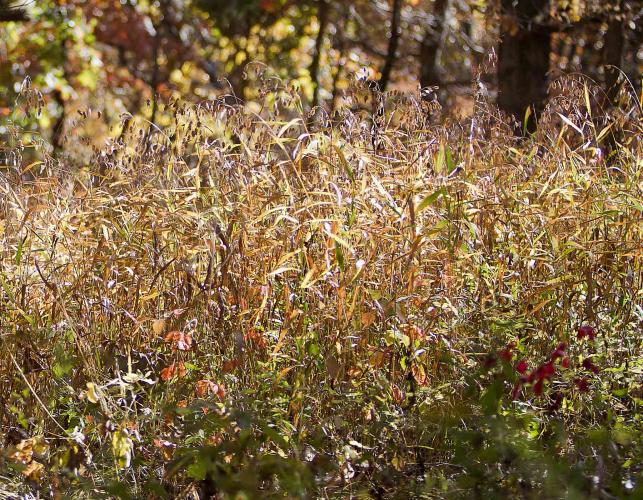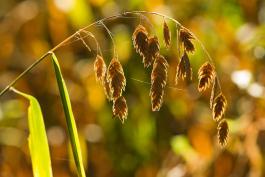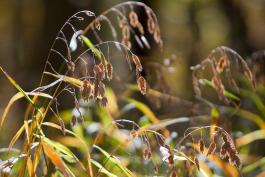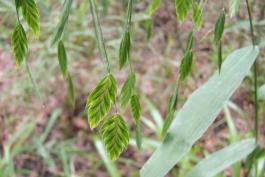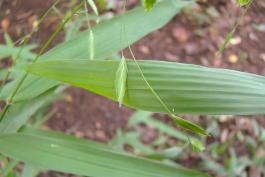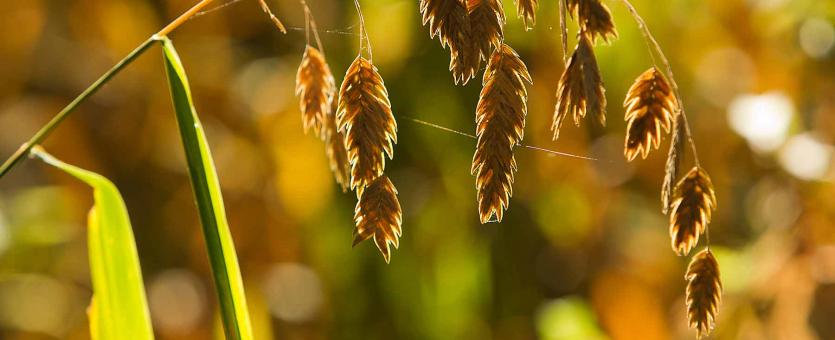
River oats is a native cool-season perennial grass common in bottomlands, stream valleys, and other moist places. It grows from stout rhizomes and forms loose colonies. The open, nodding, flattened flower and seed clusters are distinctive.
The leaf blades are 4–10 inches long and usually ½–¾ inch wide. The flower clusters are open panicles, and the panicle branches nod or droop upon maturity. The long-stalked spikelets are usually ¾–1½ inch long, appear very flat at maturity, and have 6–20 florets per spikelet. Flower heads develop July–October.
Similar species: Missouri has one other species in the genus: spike grass (C. laxum). It is uncommon in the Bootheel lowlands and in St. Louis County, occurring in bottomland forests and moist upland forests, in sand. Its flower clusters are narrow (not open) panicles with the branches erect or ascending and smaller spikelets that are short stalked or stalkless.
Chasmanthium species used to be included in genus Uniolia, but researchers have found that despite their apparent similarities, these groups are not very closely related. Today, no Uniola species are counted in the Missouri flora; they mostly occur in coastal sand dunes.
True oats (Avena fatua), the species used for oatmeal and so on, is not closely related to river oats. The famous grain crop, native to Europe and Asia, was introduced to our continent long ago. When it grows wild in Missouri, it is widely scattered statewide, mostly on roadsides and other disturbed habitats. Its spikelets are only slightly flattened, and it has awns (fairly stiff, hairlike fibers), often twisted or bent, extending out of the spikelet tips.
Height: flowering stems 3–5 feet.
Common nearly statewide, but absent from far northwestern Missouri and most of the Bootheel lowlands.
Habitat and Conservation
Occurs in bottomland forests, moist (mesic) upland forests in ravines and valleys, banks of streams and rivers, and bases of bluffs.
Status
Native cool-season perennial grass that forms loose colonies from stout rhizomes.
Human Connections
Though it can spread prolifically or even aggressively by seed, river oats has become popular as a shade-tolerant ornamental in gardens, and the gracefully arching, fluttery dried seed heads are used in dried flower arrangements. The young leaves are bright green, then turn coppery in fall and brownish in winter. The seed heads start off green then turn bronze or tan when mature.
River oats provides good forage and hay for grazing animals, but it disappears under heavy grazing.
Edible foods enthusiasts note that the seeds can be processed and used as a cereal grain or to make a flour.
The many common names for this plant reflect its wide range in eastern North America and the many perspectives people have on it. People who live near coasts tend to be familiar with a plant called sea oats (Uniola paniculata), which is similar but quite a bit taller and occurs in sandy coastal habitats — so their name for river oats is “inland sea oats,” to distinguish it from the species that occurs by the sea. But here in Missouri — a land of many rivers, but no sea coasts, so no sea oats — the name “river oats” makes more sense.
Ecosystem Connections
River oats is one of the major food plants for the caterpillars of the northern pearly-eye (Enodia anthedon), a beautiful woodland butterfly that is grayish brown with several dark eyespots. A number of skipper species also use river oats as a caterpillar food plant. One of these is Linda’s roadside-skipper (Amblyscirtes linda), an Ozark native that’s rare everywhere it occurs, and Missouri holds most of its population.
A variety of rodents and seed-eating birds, including turkey and quail, eat the seeds of river oats. Deer eat the seeds and foliage.
Bottomland and stream-edge plants play important roles in preventing erosion by floods. The network of strong roots helps hold the soil in place, and the thirsty, growing plants absorb excess moisture from the soil.
